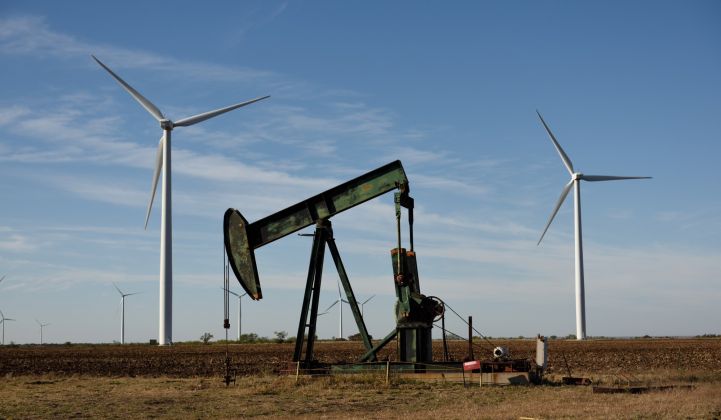The cost of shifting the U.S. power grid to 100 percent renewable energy over the next 10 years is an estimated $4.5 trillion, according to a new Wood Mackenzie analysis.
This estimated price tag is associated with transitioning entirely to renewables: replacing nuclear and fossil fuels with renewable energy, while keeping hydro, biomass and geothermal, consistent with a 100 percent renewables vision.
If nuclear were to remain in the energy mix, the total price tag would drop to $4 trillion.
According to the analysis, $4.5 trillion covers everything needed to reliably produce and deliver clean energy to consumers. That runs the gamut from constructing and operating new generation facilities, making capacity payments, investing in transmission and distribution infrastructure, delivering customer-facing grid edge technology and more.
The model used for the estimate is based on today’s technology and does not factor in potential future innovations. However, WoodMac's model does take into account the cost inflation in materials and labor that would be likely to occur in an “accelerated build” scenario.
“Markets can reach 25 percent wind and solar market penetration with relative ease, assuming fundamental natural resource and grid infrastructure prerequisites. Beyond that point, operational and cost complexities progressively multiply, in large part due to the intermittent nature of renewables,” the authors state.
No large and complex power system in the world operates with an average annual penetration of greater than 30 percent wind and solar, the report says.
To move toward 100 percent renewables, WoodMac lays out the three major hurdles that the United States must overcome.
First, there must be unprecedented build-out of wind and solar capacity. According the report, a build-out of the scale necessary to replace nuclear and fossil fuel generation would cost $1.5 trillion of the total.
If you add storage to the build-out — the authors estimate 900 gigawatts would be needed, assuming 24 hours of duration (16.8 terrawatt-hours) — the cost rises to $4 trillion.
Transmission costs are the next piece in the puzzle. The U.S. currently has about 200,000 miles of high-voltage transmission (HVT). The report estimates that achieving 100 percent renewables would require doubling these transmission lines. Adding 200,000 miles of new HVT would add $700 billion to the total price of grid decarbonization.
Taking cost inflation of materials and other factors into account, the total comes to $4.5 trillion if the transition were to take place in 10 years.
Would the transition be cheaper if completed by 2040, rather than 2030? This analysis says no.
"The total price tag is not dependent on timeline, just the cost per year, as we are assuming current technology," noted Dan Shreve, head of global wind energy research at Wood Mackenzie and one of the authors of the report.
Recommendations made by the analysts assume a scenario in which the primary goal for stakeholders is minimizing the overall cost of the U.S. transition to renewables.
(Of course, such a transition would not happen in a vacuum; the estimated costs of climate change for the U.S. in this century could also climb into the trillions and rise even more the longer action is delayed.)
In sum, “Wood Mackenzie concludes that RE100 goals remain largely aspirational but attainable given a reasonable timeframe to allow for technology development, regulatory realignment and socioeconomic reforms.”
***
Details of the analysis are available to the public here.




